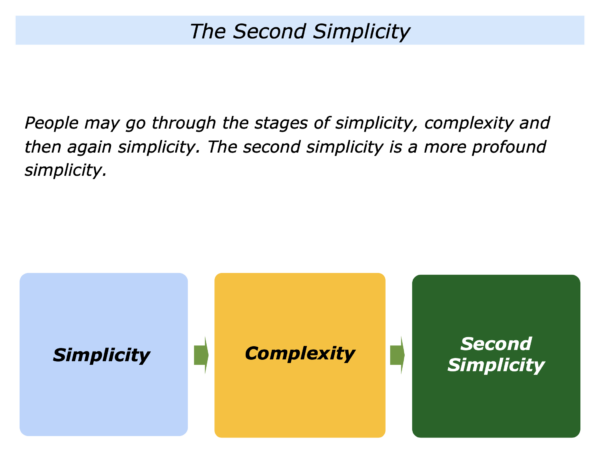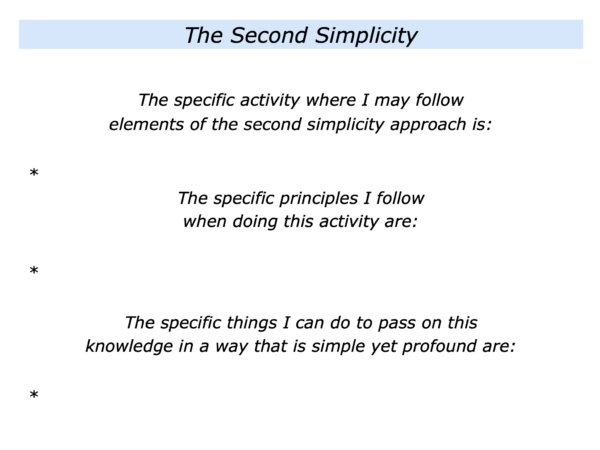
Wise people sometimes pass on a legacy that embodies the second simplicity. They get to the heart of the matter and explain things in a way that is simple yet profound. Oliver Wendell Holmes summed this up when he said:
“I would not give a fig for the simplicity this side of complexity, but I would give my life for the simplicity on the other side of complexity.”
Let’s explore how people who get to this stage go through the years of simplicity, complexity and then the profound simplicity.
Simplicity
One person explained the route they took in life. This began with them recalling the first simplicity.
“Life appeared simple when I was young. As a teenager I believed in love, peace, beauty and building a better world.
“Powered by idealism, I threw myself into voluntary work, protested against racism and studied the great philosophies.
“Many thinkers reinforced my beliefs. There seemed obvious answers to solving the world’s problems. My ideals kept me going into my early twenties.”
Complexity
Some people then encounter complexity. They go to work, enter university and graduate into the professions. They become experts, speak in strange languages and write in long sentences.
They join big companies and get lost in matrix organisations. They get married, incur debts, suffer setbacks, make compromises and bury their dreams. They say:
“Life is not that simple.”
At some stage, however, life can bring different wake up calls. Those who are faced by life threatening illnesses, for example, quickly reassess their priorities. They rise above the daily habits and focus on what is really important in life.
Second Simplicity
The second simplicity is a profound simplicity. A person may return to their original philosophy, but now experience brings wisdom.
The pains and pleasures of life bring an extra timbre to their voice. Speaking from the depths of their being, their words resonate more deeply.
They have wisdom in their bones. Demonstrating humility rather than hubris, they make sense of experience and make complicated things simple.
Such people focus on the eternal themes and pass on knowledge that people can use in their own ways. They share lessons from the second simplicity.
Let’s return to your life and work. Can you think of an activity where you may follow elements of the second simplicity approach?
You may do this when pursuing a craft, doing a certain piece of work, leading a team or doing another activity. What are the principles you follow when doing this activity? How do you translate these into action?
Imagine that you were asked to explain these principles to people. How could you pass on this knowledge in a way that people can use? How could you do this in a simple yet profound way?
If you wish, try tackling the exercise on this theme. This invites you to complete the following sentences.



Leave a Reply